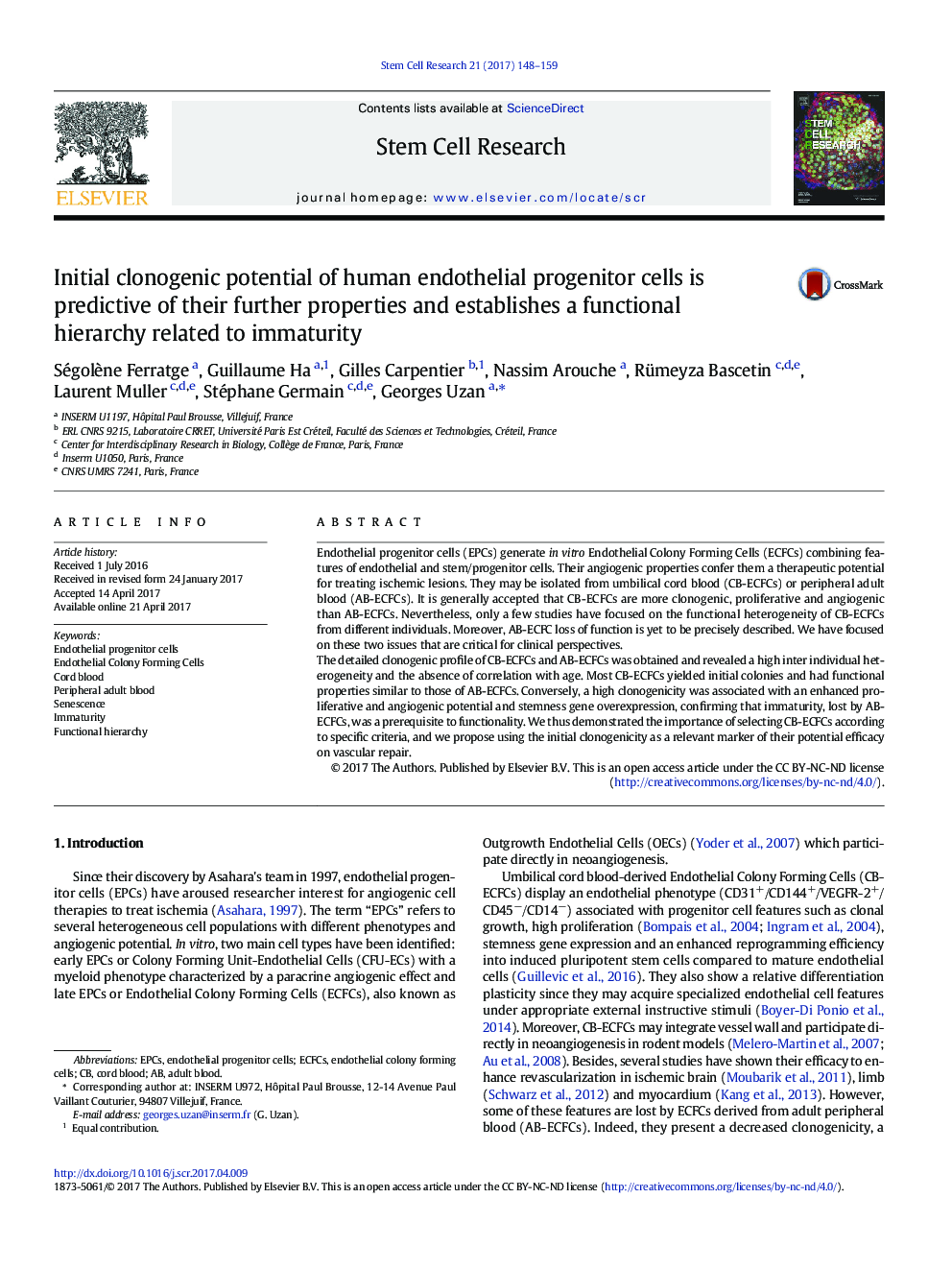| Article ID | Journal | Published Year | Pages | File Type |
|---|---|---|---|---|
| 5522656 | Stem Cell Research | 2017 | 12 Pages |
â¢Initial clonogenicity allows establishing a functional hierarchy of CB-ECFCs.â¢Clonogenic and proliferative potential of AB-ECFCs does not correlate with donor age.â¢ECFC immaturity is a prerequisite for their full functionality.â¢A poor clonogenicity of CB-ECFCs is associated with a decrease in stemness gene expression and functional impairment.
Endothelial progenitor cells (EPCs) generate in vitro Endothelial Colony Forming Cells (ECFCs) combining features of endothelial and stem/progenitor cells. Their angiogenic properties confer them a therapeutic potential for treating ischemic lesions. They may be isolated from umbilical cord blood (CB-ECFCs) or peripheral adult blood (AB-ECFCs). It is generally accepted that CB-ECFCs are more clonogenic, proliferative and angiogenic than AB-ECFCs. Nevertheless, only a few studies have focused on the functional heterogeneity of CB-ECFCs from different individuals. Moreover, AB-ECFC loss of function is yet to be precisely described. We have focused on these two issues that are critical for clinical perspectives.The detailed clonogenic profile of CB-ECFCs and AB-ECFCs was obtained and revealed a high inter individual heterogeneity and the absence of correlation with age. Most CB-ECFCs yielded initial colonies and had functional properties similar to those of AB-ECFCs. Conversely, a high clonogenicity was associated with an enhanced proliferative and angiogenic potential and stemness gene overexpression, confirming that immaturity, lost by AB-ECFCs, was a prerequisite to functionality. We thus demonstrated the importance of selecting CB-ECFCs according to specific criteria, and we propose using the initial clonogenicity as a relevant marker of their potential efficacy on vascular repair.
